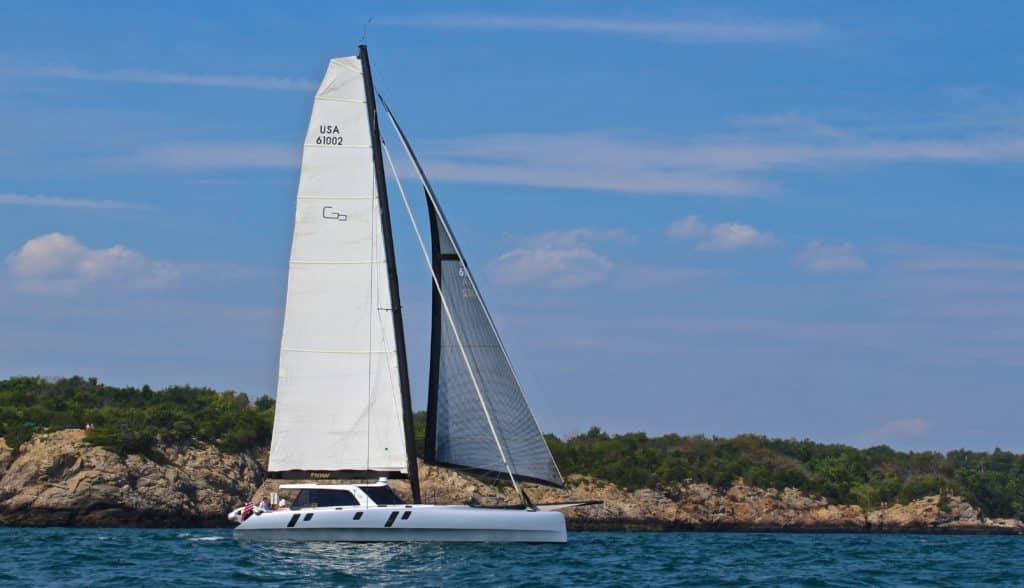
There are certain inalienable truths about trimming the mainsail aboard any cruising boat. The main halyard must be taut enough at all times to eliminate excessive wrinkling in the luff of the sail (though it may be lowered or raised an inch or two depending on the wind strength). You always want the leech of the sail firm and unflappable (some, but not all, mainsails have a dedicated leech line for this purpose). And the sail’s leech telltales should be streaming aft in unison.
Those basic rules apply to all mainsails, whether on a monohull or a multihull. But when it comes to fine-tuning the trim depending on the point of sail, there’s a subtle but important difference between a modern single-hulled sailboat, where boom vangs and backstay tension play a crucial role, and a contemporary catamaran or trimaran, with its generous roach supported by a series of full battens (which must be properly tensioned to ensure optimum shape and draft).
To put it in the simplest of terms, on a monohull, it’s all about the mainsheet. On a catamaran, it’s all about the traveler.
There’s a good reason that cats employ wide, easily adjusted travelers. They’re the primary tool for trimming the main. On a catamaran sailing upwind, the mainsheet should be cinched home and the boom positioned just slightly leeward of centerline—just like on a monohull. But as you crack off, instead of first dropping the traveler and then easing the mainsheet, as you would on a mono, resist the urge to trip the mainsheet and only ease the traveler, always keeping an eye on those flowing telltales. Continue doing so even when bearing off to a beam reach and beyond. Only then should you begin to ease the mainsheet, and always in small increments. Remember: Watch those telltales.
There are several reasons why you trim the main differently. On a monohull, in concert with the mainsheet and traveler, you have the vang to help control the position of the boom; on a multihull, the mainsheet serves the same purpose. The last thing you want on a multihull is a boom bouncing skyward on any sort of reach, from close to broad, which destroys the shape and efficiency of the sail.
Also, in puffs, aboard a multihull the apparent wind will move forward and affect the sail trim as it does so. Rather than spin the wheel and bear away, just crank in the traveler.
On monohulls, excessive heeling is a sure sign that something’s amiss. On level-sailing cats, an unbalanced boat isn’t always so easily detected; you’ll know you’re overpowered when the helm loads up. Again, lower the traveler or, if it’s already all the way down, ease the mainsheet. The next step, naturally—as it would be on a monohull—is to shorten sail and take a reef in the main.
Over time, of course, as you sail any new boat and log a few miles, matters like sail trim and balance become instinctual and almost second nature. But if you’re a rookie on a catamaran, remember two things: Telltales never lie, and the traveler is your best friend.
Herb McCormick is CW’s senior editor.








